Robert “Bud” Stefan Oliver was Selkirk’s longest serving mayor from 1984-2002.
Bud was born on July 16, 1937, in the old Selkirk General Hospital on Idell Avenue and has since lived almost his entire life in town. Bud has memories of being involved with many large developments and events in Selkirk over the years.
Bud’s first memory is living on Dorchester Avenue growing up in war times. During those days every family had to ration food, and electronic children’s toys as we know today, didn’t exist. He and his brother would make do, playing with whatever they could find, including the family’s sugar rations.
In 1950, Bud joined the Royal Canadian Sea Cadets Corps Daerwood which would develop into a passion throughout his teenage years. Each year the cadets would participate in a two-week camp ranging from destinations in Nova Scotia to British Columbia. One notable trip in Bud’s final year was when the group went a camp in Comox. They received additional week to form an honour guard, train in Abbotsford, and be inspected by Prince Phillip, who was in the area attending the 1954 British Empire Games in Vancouver.
After high school, Bud worked at the Central Office of the Manitoba Telephone System in Portage la Prairie for three years. He took a one-year hiatus to attend university courses, and then returned to MTS for a final year. Finished at MTS, Bud moved back to Selkirk where he found work at the steel foundry, ABEX Industries, for 18 years.
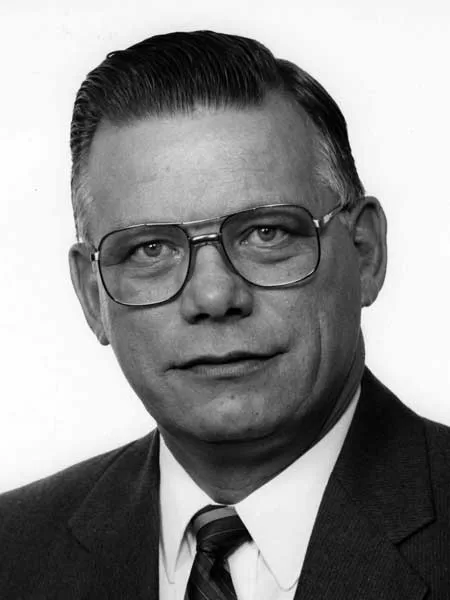
Bingos For Curling
As a young man, many years before his time in office, Bud was involved in the community, working to make it a better place.
When the Jemima Street Curling Rink building committee began construction, they only had $4000 in the bank, which was not nearly enough to cover the total cost of completion. By the time the Rink was complete in 1961, there was still approximately $70 000 owing, with many contractors and suppliers waiting on payment.
A member of the Selkirk and District Curling Club approached Bud, who had hammered many nails himself, to join the board of directors. Bud chaired the Bingo Committee to raise funds to combat the debt. The first Bingo took place at the Selkirk Arena. After a rocky start with the weather that day in July, they managed to pull it off and raised a hefty sum of $5000 in one night. Subsequently another Club member, Frank Dewar, became the chairman of the Bingo Committee. He held weekly bingos and soon the Curling Club paid off the new rink.
Bud in Office
In 1962, Bud joined the Kinsmen Club and remained active with the group for 20 years. He was made a life member in 1975, and while he had less time to devote to the Kinsmen, he never stopped being one.
Bud’s father, also former mayor and Kinsmen, Steve Oliver, was influential in Bud’s career. Growing up with his father in politics, Bud didn’t know the intricacies of his father’s work, but he knew the type of things his father was doing. His father’s example and their shared experience as members of the Kinsmen Club would serve as a basis for Bud’s community service and dedication. Bud was a natural fit for council, and later, mayor.
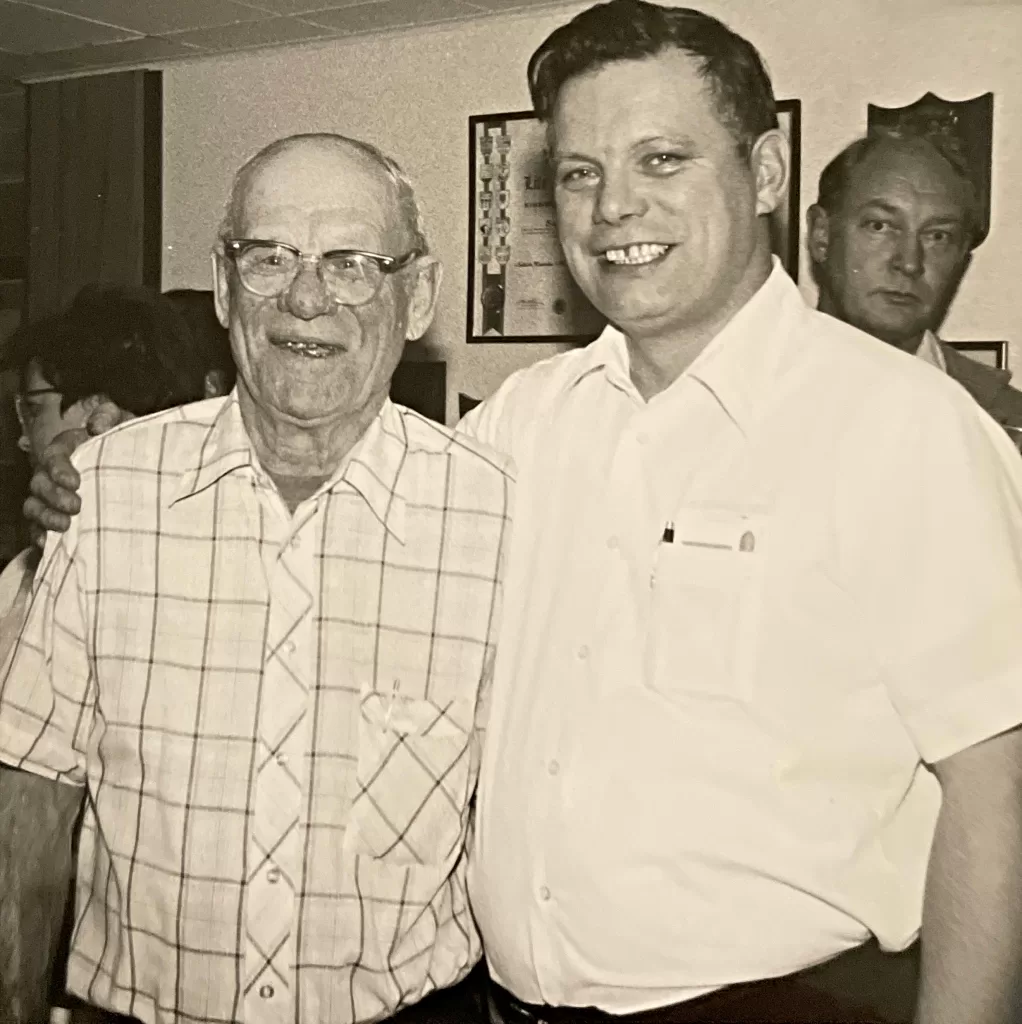
Bud’s time in politics started “with a bang” in 1969. After putting his name forward to be the candidate for the Progressive Conservative Party, he was chosen, however, he lost to Howard Pawley in the Provincial General Election. In the 1978 council bi-election, Bud’s friend, Mac MacFarlane encouraged him to put his name forward again. He did, saying, “well I’ll give it a try and if I don’t make it, fine, well we don’t make it.”
This time he did make it and Bud was elected to council in 1978 by acclamation, and then re-elected in 1980. After five successful years as councillor, Bud was approached to consider running for mayor. He was successful in the 1983 election and remained mayor for nearly two decades. His mayorship ended in 2002 when, “the people said: I think we’ve had enough of you, we’re going to try somebody else.” – Bud Oliver.
Finding Ways for Water
After just one month as mayor, a letter arrived from the Mayors of Fargo, Moorhead, and Grand Forks. The letter was an invitation to attend an international summit meeting in December of 1983, about the frequent Red River flooding. One particularly devastating flood in 1979 lit a fire to organize a way for Manitoba and each state to work together to solve the water issue. However, communicating effectively through an international border, provincial, and three state borders was a unique challenge.
From the summit, it was determined that the issue should be approached at the grassroots level. A group of volunteers took on the task of evaluating the flooding during the year and reported their findings at the next summit.
At the second summit meeting, a year later, The International Coalition for Land and Water Stewardship in the Red River (later shortened to The International Coalition, TIC) was formed. The name had already been in use by another organization, but they offered up the name for the new group to continue their work. Bud served as Chairman for TIC for 8 years.
TIC was limited in how much it could do on its own, so in the late 80s a similar minded group was formed called the Red River Basin Board. The two organizations worked hand in hand to solve the issues in the States and in Canada. Eventually the two groups joined together to form the organization now known as the Red River Basin Commission which continues to provide support for the land and water issues in the Red River basin.
During his time on the board, Bud observed the power of volunteers, and communication grow between municipalities. Finding himself personally invested in the Red River basin issue, Bud maintained his seat on the RRBC for 35 years, well after his political career ended in 2002.
The Catfish Feud of 1986
In 1986, the location of Selkirk’s well-loved Chuck the Channel Cat statue resulted in more mail sent to council than any other issue during Bud’s time on council. Many people had suggested putting the statue in Selkirk Park or on a barge in the river. “I was thinking we have to put it on a dolly so we can just pull it around.” – Bud Oliver. Eventually a then empty plot of land in front where Smitty’s is today, was chosen and leased for the statue’s new home. The chatter about the statue subsided, for a moment, until another debate surfaced.
The Community Futures Group, who had commissioned the statue, registered the title, ‘Catfish Capital of North America’ for Selkirk, but the town of Emerson disagreed, declaring that they were the capital. Rumors circulated that Selkirk was suing Emerson for stealing the title.
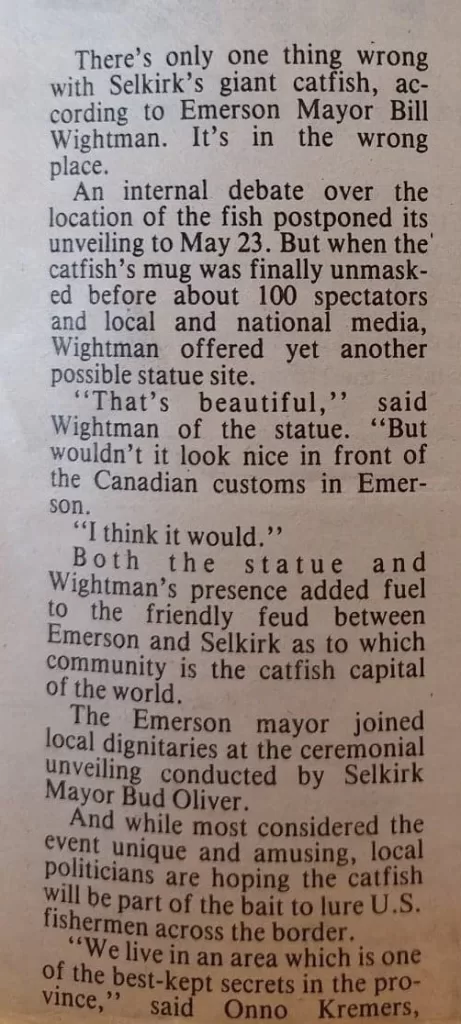
Bud was shocked, but quickly realized it was a set up, just for fun, and great promotion for Selkirk. CBC invited Bud and the Mayor of Emerson to duel it out on the radio show, “As it Happens,” but the battle was a draw, and a cook-off was arranged to officially squash the conflict.
Community at the Heart
Bud was always invested in serving the community. For him, it was just something you did. Early on, from Sea Cadets to joining council and being elected Mayor, Bud was there hammering nails, raising money, and living the Kinsmen motto: ‘for the community’s greatest need.’ Along with many council members, businesses, organizations, and individuals, Bud was involved with many large developments and events in Selkirk such as the construction of the high school pool in the late 1960s, planning Selkirk’s centennial year, and many others. It’s no surprise Bud was Selkirk’s longest serving mayor.
Bud Oliver Collection
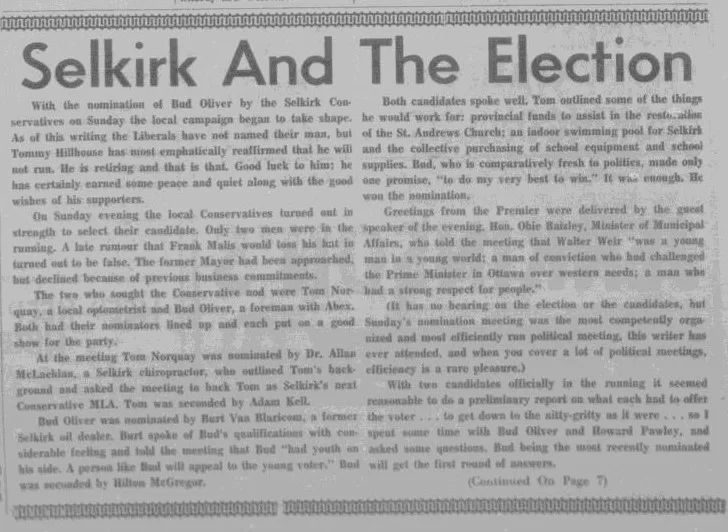
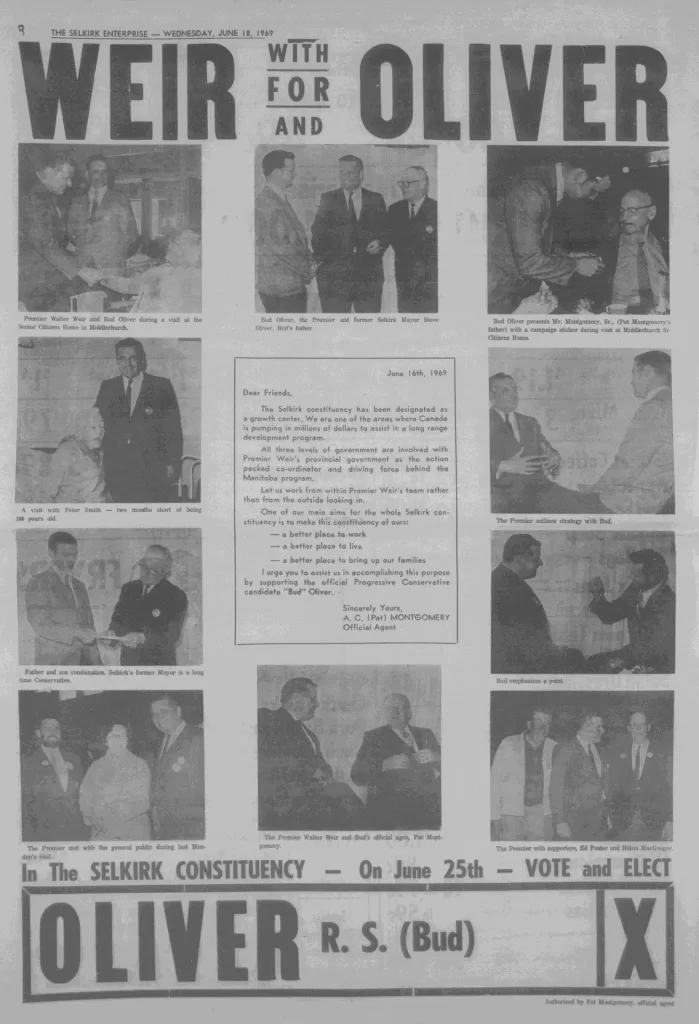
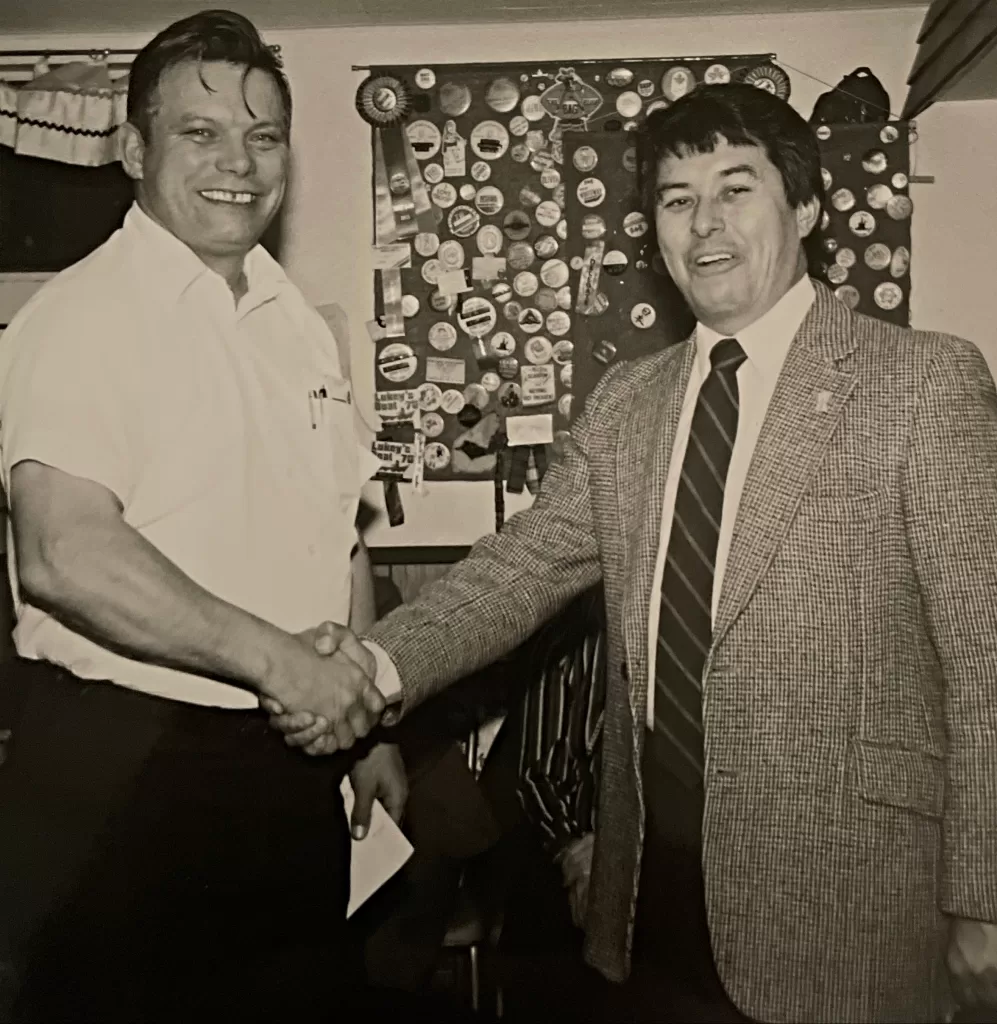



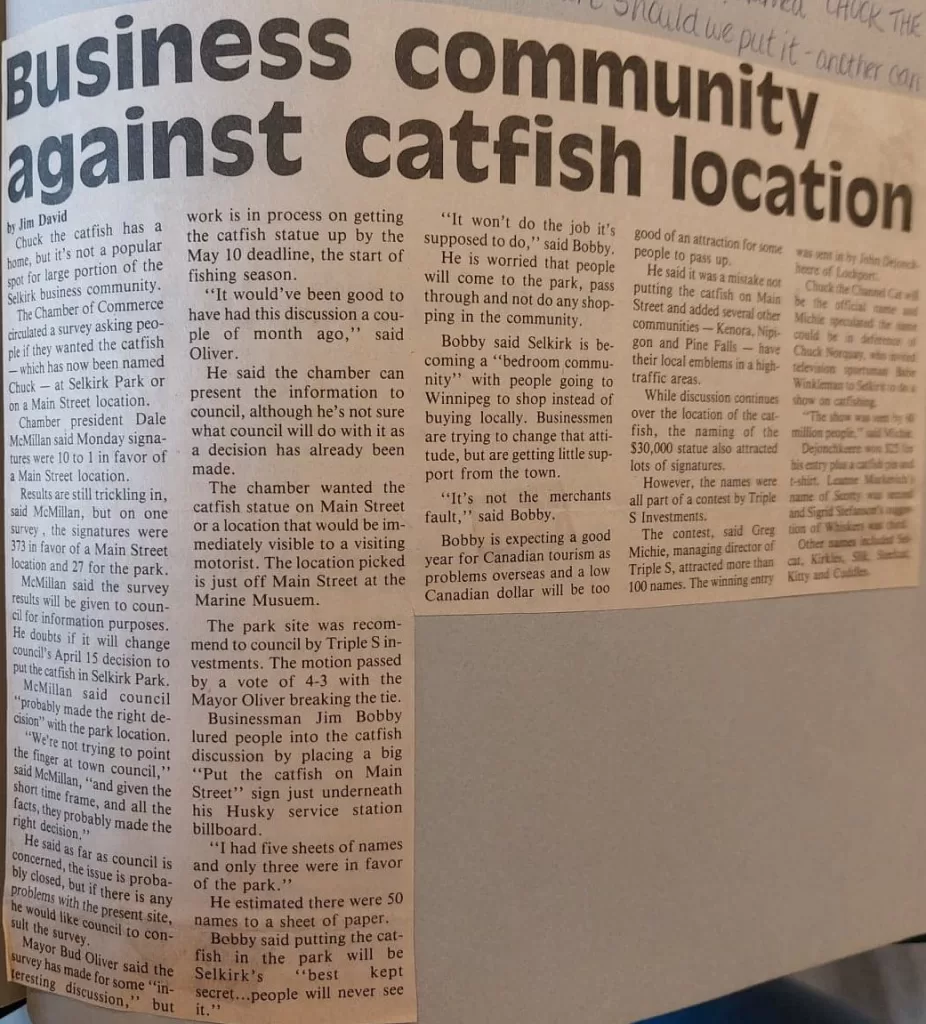
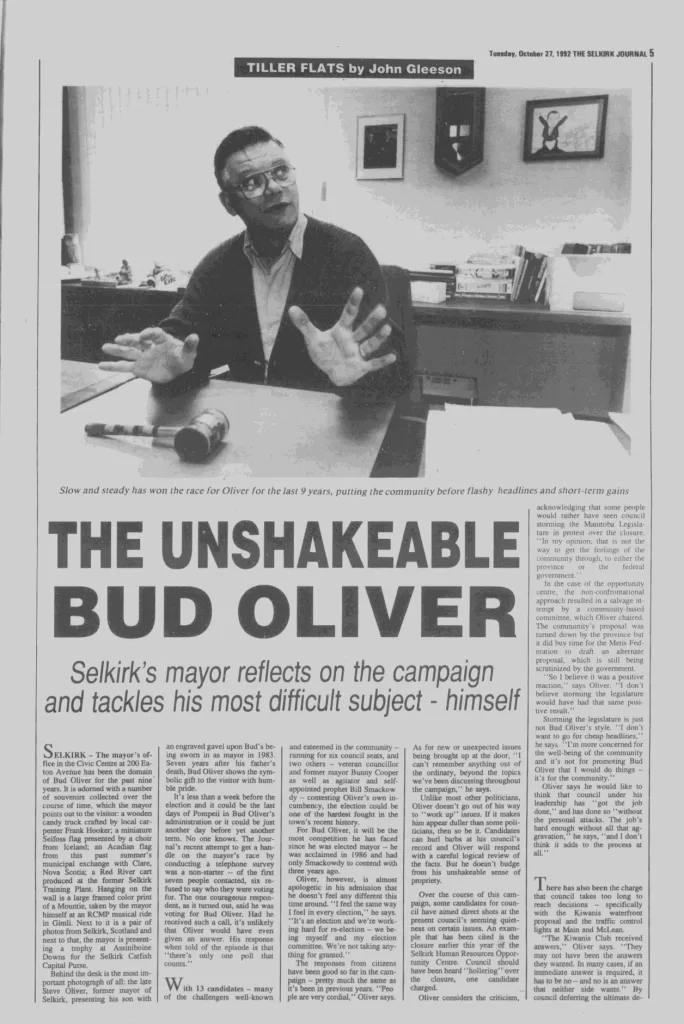
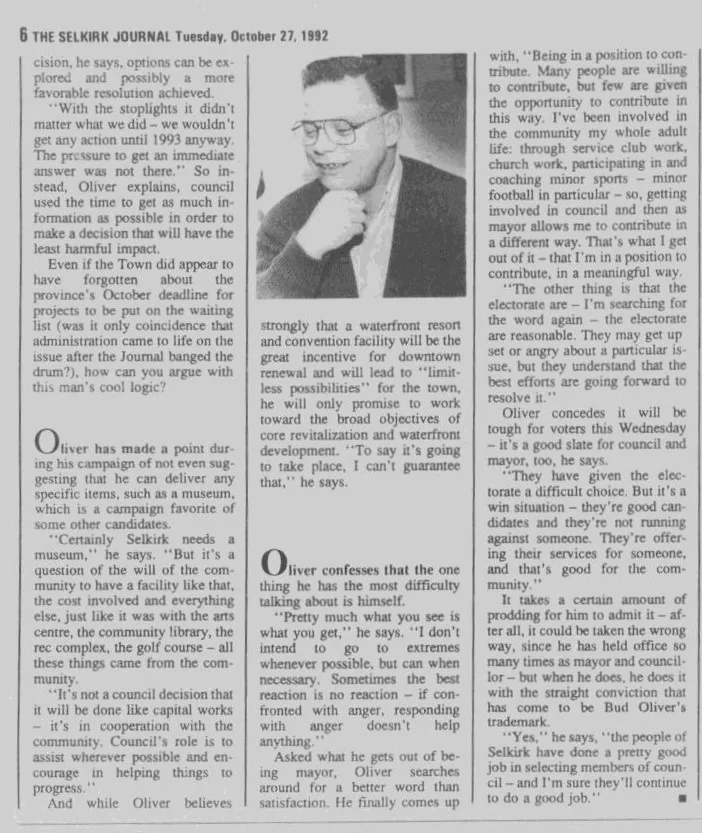
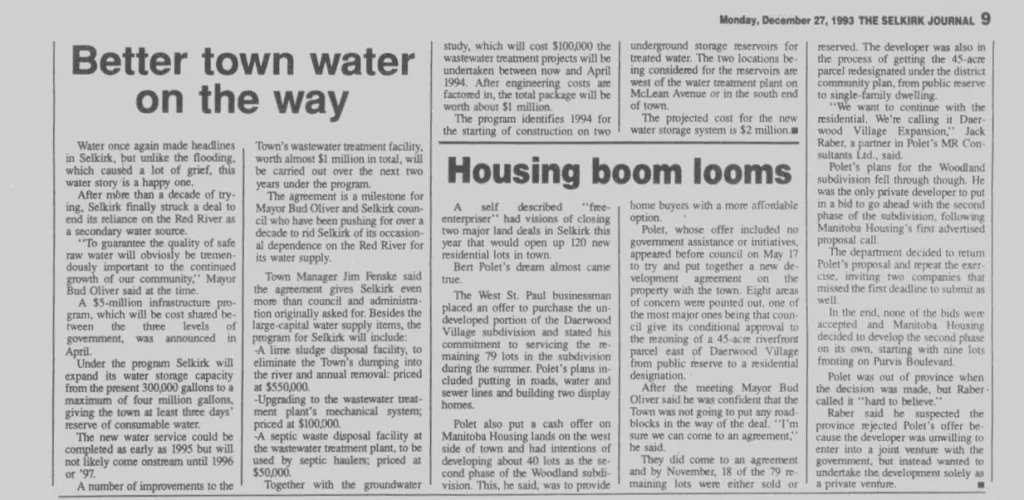
Sources
City of Selkirk Website
Manitoba Historical Society
Selkirk the First 100 Years, Barry Potyondi
Stories of Selkirk’s Pioneers and Their Heritage, Kenneth G. Howard
Selkirk Enterprise
Selkirk Journal
Chuck Norquay family newspaper clippings
Oral History Interview with Bud Oliver

